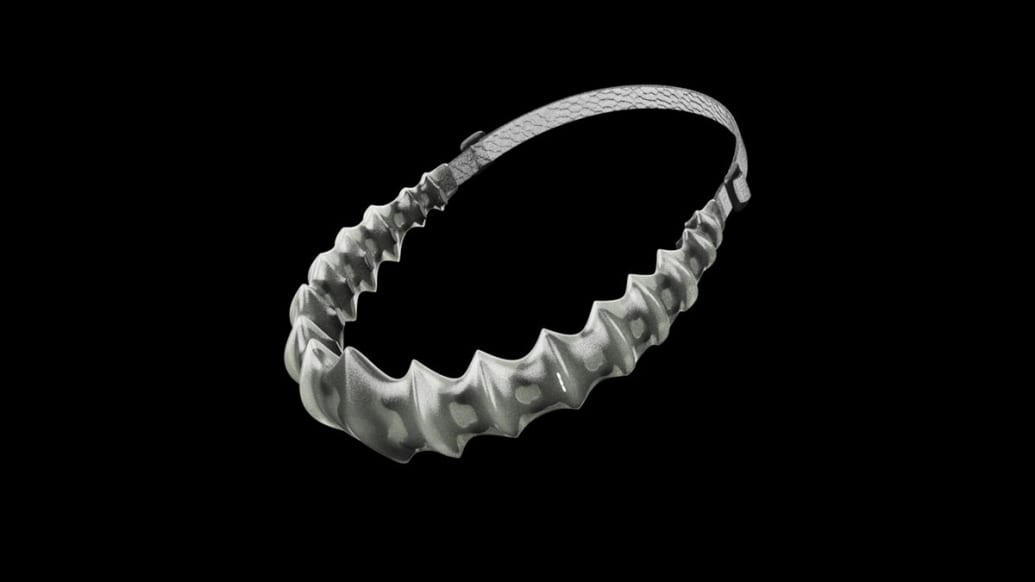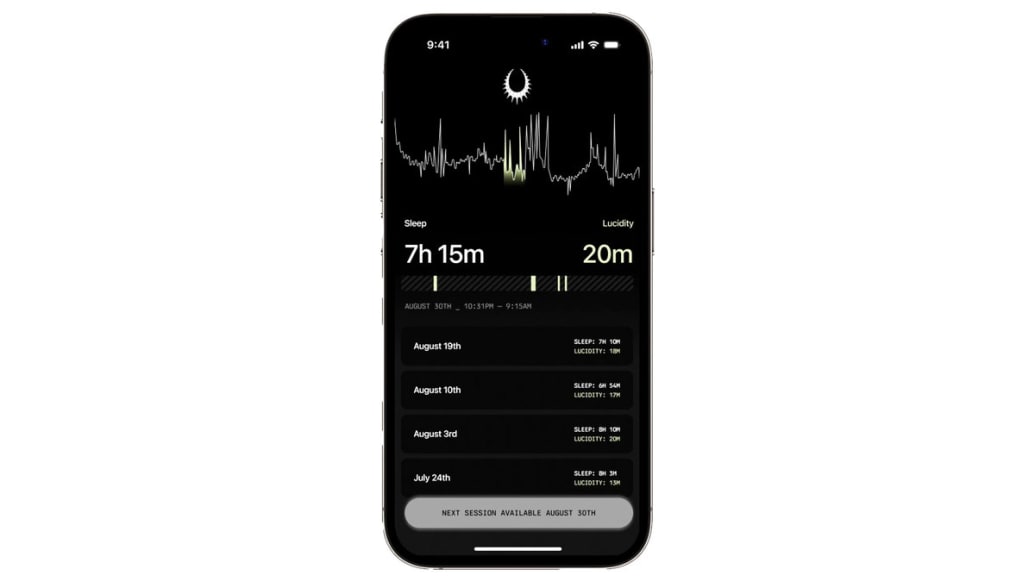When you go to bed tonight, there’s a small chance you might have a lucid dream—or a dream where you’re aware that you’re dreaming. It’s a relatively rare phenomenon, with one study finding that they occur in about half the population. Of that group, just 20 percent experience lucid dreams monthly and just 1 percent experience them weekly.
But when it does happen, though, it can be downright magical—allowing you to explore your consciousness and have experiences that are limited only by your imagination. It’s the reason that there are entire communities online dedicated to the practice such as Reddit’s /r/luciddreaming. The forum boasts half a million users who share tips on how to achieve the dream state, and swap stories about their experiences.
Even with practice and consistency, though, it can be difficult to do. However, there might soon be a technological solution that will allow just about anyone to lucid dream.
“It’s an extraordinary thing to be awake and aware in your own mind—on par with a spiritual experience,” Eric Wollberg told The Daily Beast. “The reason to build a device to be able to induce this brain state is that you’re giving people access to a pretty unfettered user interface with reality.”

A render of the first iteration of the Halo headset. The final design for the device will be unveiled on Oct. 20.
Prophetic AI
Wollberg is the co-founder and CEO of Prophetic, a tech startup that’s aiming to create one of the first wearable devices that’ll allow users to trigger lucid dreams whenever they sleep. The device, dubbed the Halo, would utilize an array of AI-enabled sensors and focused ultrasound beams to target brain regions involved in lucid dreaming.
It reads like something ripped straight from the movie Inception. Not only would a device like this have an obvious recreational impact—who wouldn’t want to play in the whimsical sandbox of your own dreams?—but Wollberg argues that it could open up new avenues for productivity and spirituality as well.
“The device that we’re building is the equivalent to the top echelons of experienced lucid dreamers,” Wollberg said. “It’ll give you awareness and control over the phenomenological contents of your dreams.”
Sweet Dreams Are Made of This
If you want to have a lucid dream, you probably can this week with a bit of research and practice. In fact, there’s an entire ecosystem of books, YouTube channels, and websites dedicated to the art of lucid dreaming.
Some common pieces of advice are things like keeping a sleep journal to record your dreams as soon as you wake up. When you do dream, you can do things like “reality testing,” which are tactics to see if you’re awake or not.
Try this one tonight: While you’re dreaming, take a look at your reflection in the mirror. If it looks off or even completely different from your normal reflection, then you’re likely dreaming (or you’re awake and lost in a carnival fun house). You can do the same thing by looking at a clock twice to see if it’s the same both times. By doing practices like this regularly, most people eventually are able to dream lucidly—giving them access to the playground of their imagination for the night.
Outside of just flitting around your imagination, lucid dreaming can potentially afford you an extra six to eight hours a night to work towards accomplishing goals you can’t necessarily get to in your waking hours (depending on how long you sleep of course). Many famous creatives and scientists have utilized their dreams over the years in order to solve problems creatively.
For example, Salvador Dali would leverage quick naps and find inspiration for his surreal paintings in his dreams. Similarly, Thomas Edison would fall asleep with a ball in each hand—and as soon as he nodded off, he’d let go of the balls which would crash to the floor and wake him up. He’d then immediately be able to recall new ideas using this practice.
This liminal space between sleep and wakefulness is called hypnagogia—and it’s a mostly untapped source of creative potential, according to many lucid dreaming advocates. Numerous studies into this phenomenon have identified that the prefrontal cortex—the region of the brain responsible for decision making and self-awareness—lights up during lucid dreams.
“One of the most common things that has been observed [with lucid dreaming] is increase in frontal brain connectivity,” Wes Louis Berry, co-founder and CTO of Prophetic, told The Daily Beast.
The Halo would use non-invasive ultrasounds focused on this region of the brain in order to replicate this “lighting up” process to induce lucid dreaming. The device would also be trained on a dataset of fMRI imaging from lucid dreamers using generative artificial intelligence technology to allow it to work across all different types of brains.
“We’re using this generative transformer model to basically create sequences and patterns [in the users’ brains] that resemble the fMRI data,” Berry explained. “We’re generating ultrasonic pulses to basically simulate a similar pattern to the naturally occurring neuro activation that happens in lucid dreaming.”
Dream On
Not all dreams are good. Sometimes, they can turn into nightmares. If you’re one of the 7.6 percent of the population who experience sleep paralysis—the phenomenon where you “wake up” from your sleep to find yourself completely frozen and unable to move—it can be somehow worse.
Those who frequently lucid dream can occasionally experience this, according to the Sleep Foundation. When it happens, it’s frightening and often accompanied by strange and bizarre hallucinations. There’s also some evidence that lucid dreaming can cause disruptions to healthy sleep patterns—and may cause sleep deprivation as a result.
However, both Wollberg and Berry argue that the evidence for sleep disruptions are a mixed bag—likely due to the lack of deep research into lucid dreaming specifically. It’s part of the reason that Prophetic is partnering with the Donders Center for Cognitive Neuroimaging at Radboud University in the Netherlands on a series of three studies into lucid dreaming—culminating in a trial where 30 lucid dreamers undergo the focused ultrasound stimulation using the Halo during sleep.

The Halo headset will come with an accompanying app that allows users to track their sleep schedule and lucid dreams.
Prophetic AI
For now, the goal is to officially launch the device in 2025—though customers can put down a $100 deposit for the device that’ll go towards the eventual payment, which he estimates will be between $1,500 and $2,000.
Interestingly, Wollberg compares the Halo to Apple’s mixed-reality headset Vision Quest Pro, a device that’ll allow its users to put a digital layer over reality and put them into the heretofore overhyped metaverse. “The reason the Vision Quest Pro costs $3,500 is there’s an insane amount of technology: batteries, screens, cameras, chips, fans,” he explained. “Our device is actually reasonably unsophisticated.”
Yet, it’ll accomplish something akin to what the likes of Meta and Apple might hope for in a metaverse: giving users a chance to dive into a world of boundless imagination and creativity, a space tailor made for storytelling that breaks down the spatial barriers of our everyday lives.
“What we’re doing is bringing you to a brain state and you fill in the content,” Wollberg said. “You’re the master of what you get. It doesn’t require a lot of technology. The magic in the extraordinary work is being done by your brain.”
Read More: World News | Entertainment News | Celeb News
247
